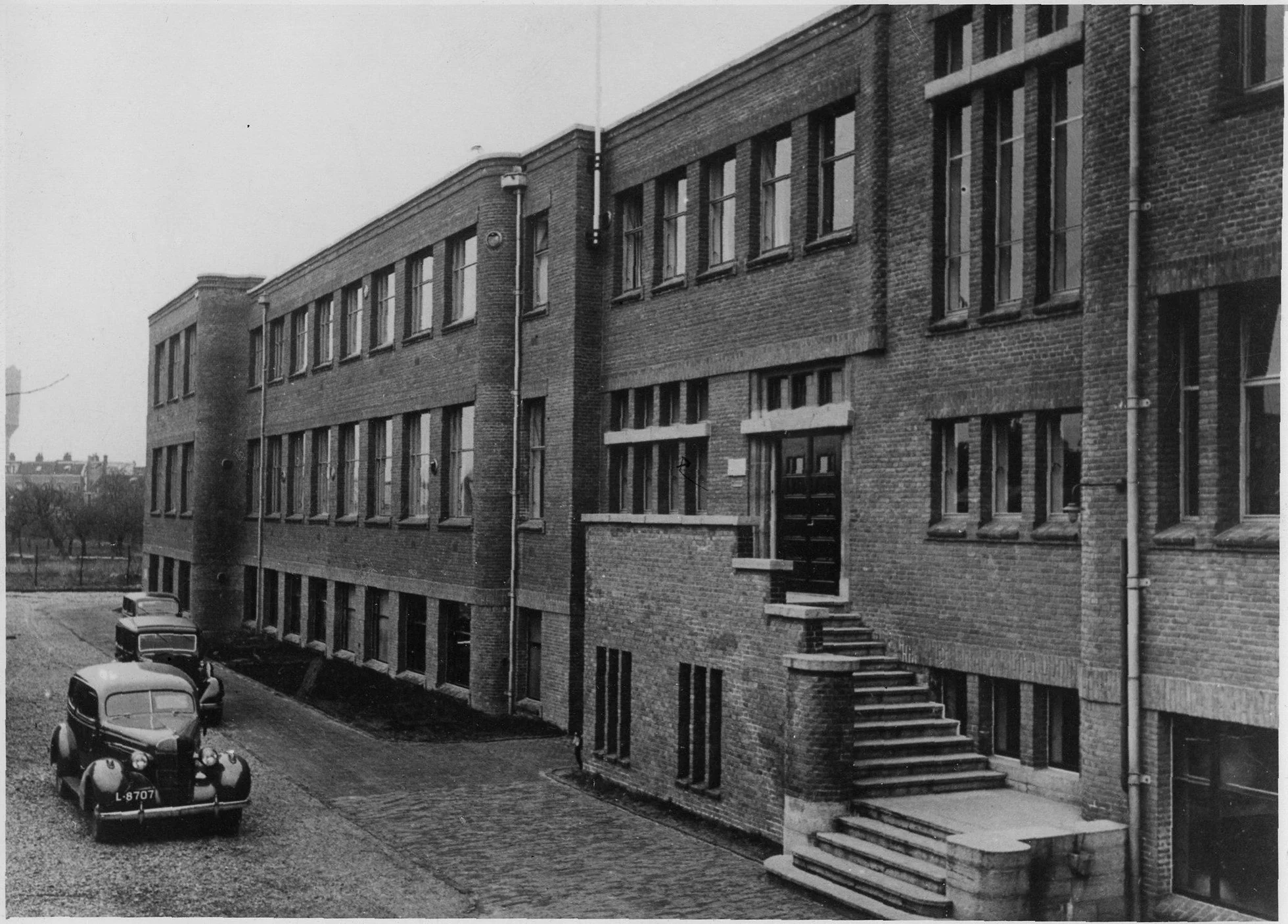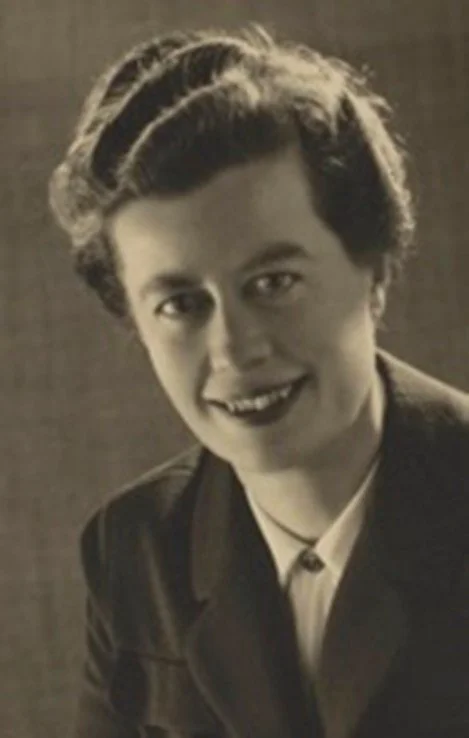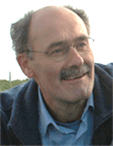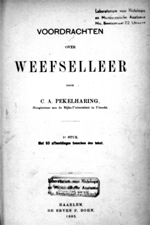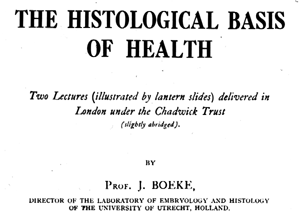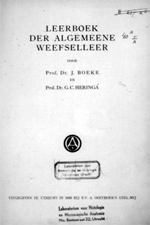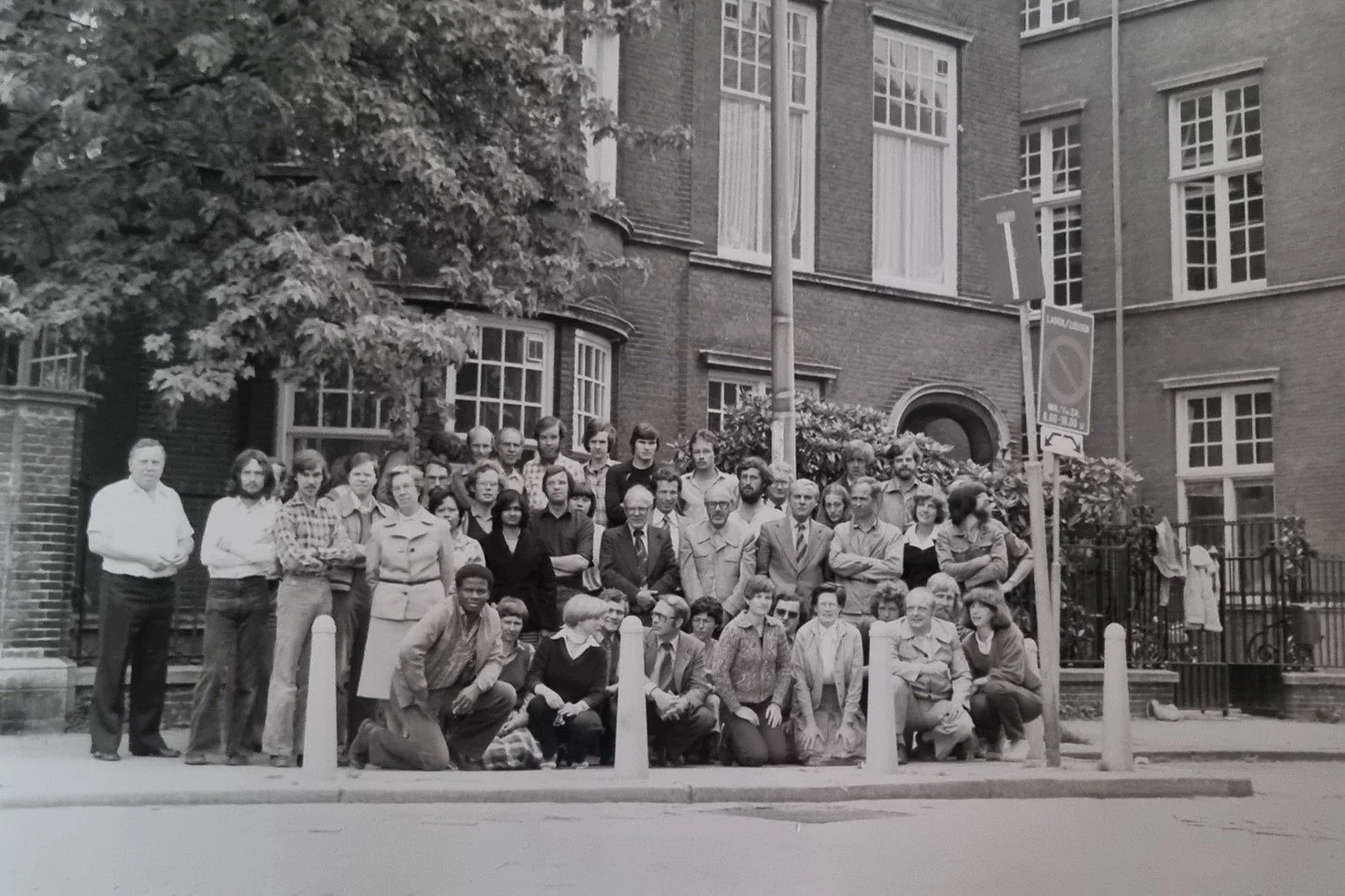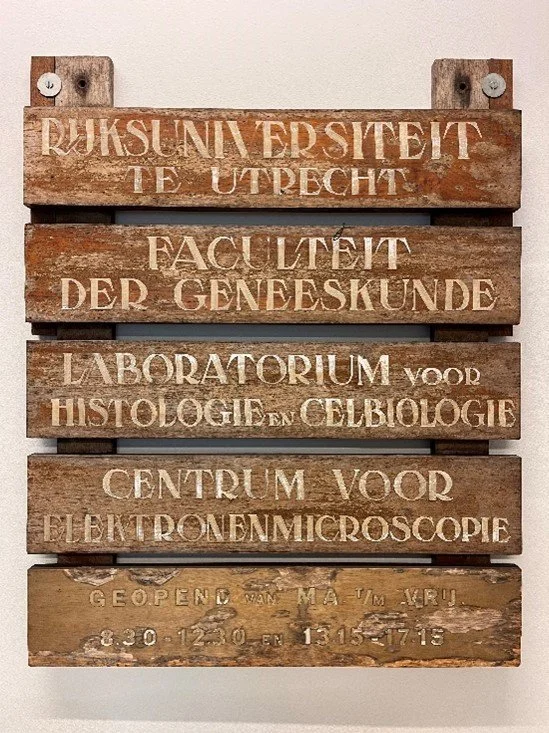History of the Center of Molecular Medicine
The Center of Molecular Medicine (CMM) has its roots as the oldest biochemistry institute of the Netherlands. It was founded in 1888 as the Laboratory of Physiological Chemistry. In 1946, the Laboratory of Histology was split off. In 2014, both laboratories, by then known as Molecular Cancer Research and Cell Biology, merged back together to form the Center for Molecular Medicine. The history of both laboratories is detailed below. As a result of the merger, the Center started off with seven full professors: Johannes L. Bos, Boudewijn M.T. Burgering, Susanne M.A. Lens, H.T. (Marc) Timmers, Frank C.P. Holstege, Judith Klumperman and Paul J. Coffer.
In the first ten years after the merger, three of those professors left, and three new professors were appointed. In 2015 Holstege left for the newly formed Princess Maxima Center, in 2017 Timmers moved to Freiburg (Germany) and, also in 2017, Bos retired. During the same time, the Center also gained three new professors. First, in 2016 prof.dr. Madelon M. Maurice was appointed, who researches cell signaling in the context of tissue growth, maintenance, and cancer. In 2019, prof.dr. Saskia van Mil was appointed, who researches human metabolic diseases and associated cancer development. Finally, in 2024 prof.dr. Jeroen de Ridder became a full professor in bioinformatics of molecular medicine.
In 2018, the Oncode Institute was launched. This is a virtual research institute that brings together high-profile cancer scientists from across the Netherlands. Professor Bos played a key role in the creation of this institute. CMM researchers Hugo Snippert, Boudewijn Burgering, Edwin Cuppen, Susanne Lens and Madelon Maurice were part of the Oncode Institute since its inception, joined by Maria Rodríguez Colman in 2024.
Professors
1991-2017 Johannes L. Bos
2001- Judith Klumperman
2001-2017 H.T. (Marc) Timmers
2003- Boudewijn M.T. Burgering
2006-2015 Frank C.P. Holstege
2009-2021 Edwin P.J.G. Cuppen
2010- Paul J. Coffer
2013- Susanne M.A. Lens
2016- Madelon M. Maurice
2019- Saskia W.C. van Mil
2024- Jeroen de Ridder
Physiological Chemistry
-
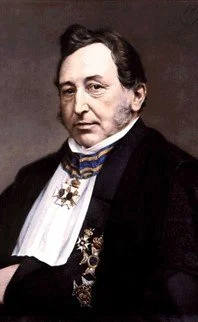
G.J. Mulder
1840-1868
First in the world to work on proteins. -
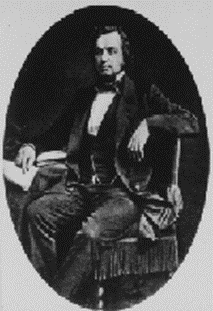
F.C. Donders
1842-1870
He taught histology, general metabolism, anthropology, forensic medicine, chemical physiology, general health and medical police, ophthalmology and pathology -
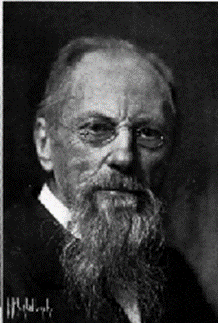
C.A.Pekelharing
1888-1918
First professor of physiological chemistry.
The Laboratory of Physiological Chemistry dates back to 1888 being the oldest biochemistry institute in the Netherlands. The history of Dutch Biochemistry goes back even further. In 1840 Gerrit Jan Mulder was appointed as Professor of Chemistry in Utrecht. He was the first in the world to work on proteins, a name he coined on the suggestion of Berzelius (protein comes from the Greek word proteos which means first). In 1862 F.C. Donders, working in Mulder’s laboratory on oxygen binding of hemoglobin, was appointed to professor of Physiology and also started research on Chemical Physiology in a small part of his laboratory, next to histology and ophthalmology. A completely new laboratory was built at the Van Wijckskade to home physiology, physiological chemistry and histology for many years.
Upon his retirement in 1888, it was decided to create a separate chair for Physiological Chemistry and Cornelis A. Pekelharing became the first Professor of Physiological Chemistry. Pekelharing worked mainly on Thrombin and Pepsin, identifying these enzymes as proteins, a highly debated issue around the turn of the century. He retired in 1918 and was succeeded by Willem E. Ringer, his assistant. Under his supervision a new laboratory was built at the Vondellaan, nr 24A, which was opened by Princess, later Queen, Juliana on October 25, 1935. This building remained the home of Physiological Chemistry until 1994, when the laboratory was torn down and the Department moved to its present location, the Stratenum, at the main University Campus, next to the Academic Hospital.
In 1944 Ringer was succeeded by the chemist Hendrik G.K. Westenbrink, who came from the laboratory of B.C.P. Jansen in Amsterdam. Westenbrink was well known for his work on vitamin B1 (thiamin) and some 50 students finished their PhD under his guidance, 12 of whom became full Professor elsewhere in the Netherlands. He was a key figure in restoring international contacts in the field of Biochemistry in Holland after the second world war and was one of the founders of Biochimica et Biophysica Acta (BBA) in 1947. His sudden death in 1964, only a year after he became Rector Magnificus of Utrecht University, came as a shock to the biochemical community.
In 1962 Elisabeth P. Steyn Parvé, Westenbrinks close collaborator, was appointed as Professor of Physiological Chemistry so the chair was doubled. Steyn Parvé was known as a woman’s right activist, and lobbied for apartment construction for single people, which was scarcely available at the time [‘Een klein huis, maar het mijne’ - Oud Utrecht, volume 89, issue 4, August 2016]. In the lab, she initiated research on phosphatases using yeast as a model system. One of her collaborators, Thomas H. Rozijn, introduced research on histones and chromatin in yeast, as well as studies on ribosomal RNA and was Professor from 1980 to 1989. Steyn Parvé retired in 1981.
Prof.dr. Elisabeth Steyn Parvé, Utrecht’s first female medicine professor. Picture Catalogus Professorum, Utrecht University.
Three years after Westenbrink’s untimely death in 1967 his chair was occupied by Hendrik S. Jansz. He introduced DNA research in the Laboratory as a new line of investigation, with emphasis on DNA replication using the bacteriophage jX174 as a model system. Later he became also involved in studies on structure and expression of calcitonin genes. He appointed John S. Sussenbach as a staff member in 1970 who initiated studies on the replication of adenovirus DNA and became Professor of Molecular Biology in 1980. In the mid 80s Sussenbach focused his attention on the function and expression of insulin like growth factor (IGF) genes. The studies on adenovirus DNA replication were continued by Peter C. van der Vliet who succeeded Steyn Parvé in 1984. He initiated the study of the enzymology of adenovirus DNA replication employing a reconstituted system. Jansz retired in 1992 and was succeeded in 1991 by Johannes (Hans) L. Bos who introduced signal transduction into the laboratory, with special emphasis on small GTPases like the Ras protein.
Prof.dr. Hans Bos, one of the founders of the Oncode Institute. Picture Catalogus Professorum, Utrecht University.
In 2010 the name of the department was changed into “Molecular Cancer Research”. In 2014, the department had four chairs, Hans Bos, Marc Timmers, Boudewijn Burgering and Frank Holstege.
Locations in Utrecht
1888-1918 Van Asch van Wijkskade
1918-1935 Maliebaan, coachhouse
1935-1994 Vondellaan 24A
The lab of Physiological Chemistry (Vondellaan 24A) in the 1930’s or early 1940’s. Unknown source, public domain. Picture Utrechts Archief, cat#128335. The building has been demolished and replaced by the building of the Grafisch Lyceum Utrecht.
Professors
1888-1918 Cornelis A. Pekelharing
1918-1944 Willem E. Ringer
1946-1964 Hendrik G.K. Westenbrink
1962-1981 Elisabeth P. Steyn Parvé (later Hulst-Steyn Parvé)
1967-1992 Hendrik S. Jansz
1980-1989 Thomas H. Rozijn
1980-2000 John S. Sussenbach
1984-2007 Peter C. van der Vliet
1991-2017 Johannes L. Bos
2001-2017 H.T. (Marc) Timmers
2003- Boudewijn M.T. Burgering
2006-2015 Frank C.P. Holstege
2013- Susanne M.A. Lens
Cell Biology / Histology
Based on an original text by prof.dr. G.J. Strous from 2002.
Histology was introduced in Utrecht by Donders. For him, histology, like chemistry, was an essential element in the understanding of the function of an organ. At many occasions he expressed the importance of the knowledge of structures in order to understand the function. Essentially he was a physiologist with special attention to ‘the study of vision’. Since his appointment in the medical faculty in 1842 he tried to introduce histology in the medical curriculum, but not only in our days such a curriculum is difficult to change. Therefore he decided to give private lessons in histology to students who were interested. With this, he was successful and in 1847 he was offered the chair in General Biology at the medical faculty. This chair was especially created for Donders and his teaching would comprise histology and general metabolism, anthropology, forensic medicine, general health and medical police, ophthalmology and later also pathology. In his inaugural speech in 1848 he expressed his gratitude for his appointment but he also criticized the medical faculty that for such a long time had said to educate young people to be medical doctors, but did not even teach them histology. As indicated before, he was not a l'art pour l’art histologist, completely satisfied by the beauty of what he saw. When he became a full member of the faculty in 1862 histology became a regular part of the medical curriculum.
In 1869, histology branched from the physiology and was taught separately by Donders' son-in-law Th.W. Engelmann. Already by this fact, he can be considered as the first professional histologist in Utrecht. This situation, however, lasted not for a long time. One year later, in 1870 Engelmann took over the chair of physiology and again histology was incorporated into the physiology. Although being a physiologist, Engelmann was strongly interested in histology. He used morphology as an argument in his study of contractile elements such as cilia, smooth and striated muscles and the heart. He was one of the first to recognize the muscular origin of the Purkinje fibres in the heart and hence formulated the myogenic theory of the heartbeat. He also discovered the myoepithelial cells as contractile elements in a number of exocrine glands. Using polarized light, he discovered that the mass of a sarcomere in a striated muscle did not change during contraction.
When the Laboratory of Physiological Chemistry was founded in 1888, Engelmann kept the chair of physiology proper and Pekelharing was given the chair of histology and physiological chemistry. Both departments were housed in the physiological institute at the Van Wijckskade. In his scientific work, however, he was more chemist than histologist studying the synthesis of pepsin in relation to the function of the stomach, of creatinine and of pancreatic lipase. On the other hand, he demonstrated his thorough knowledge of histology by writing an excellent text book.
One of his assistants was M.A. (Marianne) van Herwerden, who was appointed lecturer in cytology in 1908. This appointment was not in the medical faculty but in the Faculty of Science. She studied among other subjects the properties of cytoplasm, the menstrual cycle, the influence of the islands of Langerhans on the metabolism of carbohydrates and on the morphology of the exocrine pancreas, the metabolism of purine and the structure of nucleus and nucleolus, the effect of toxic agents such as cyanide and radium on cells and the culture of bone marrow in vitro.
After Pekelharing’s retirement in 1918, Ringer succeeded him in Physiological Chemistry, and it was generally expected that Van Herwerden would get the chair of histology. Obviously, the medical faculty was not ripe to accept a woman as a member. Instead of her, Jan Boeke, attracted from Leiden, was appointed as professor in Histology and Embryology [1]. Marianne was granted a sabbatical in the United States that she spent in 1920 in New York and Boston. Here she came into contact with the eugenic movement and the study of blood groups. For the rest of her life, she would be one of the important members of the European eugenic movement. After her death in 1934 cytology again was incorporated into histology.
-
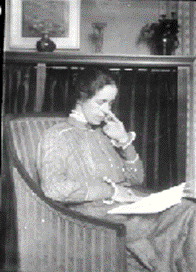
M.A. van Herwerden
-
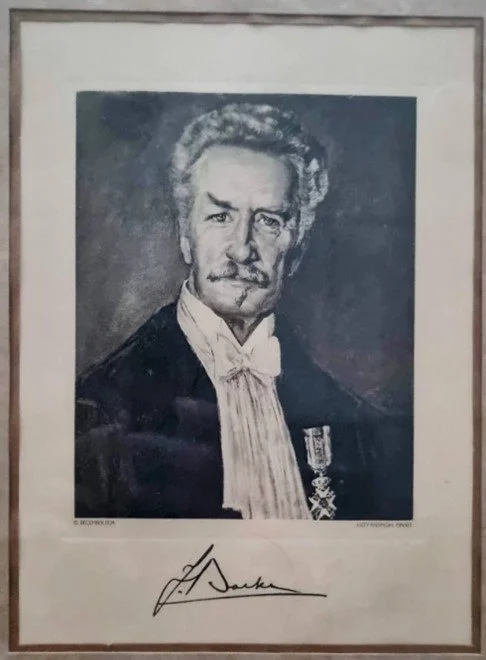
Jan Boeke
On December 15, 1934. Picture at Cell Biology.
-

Laboratory J. Boeke
Boeke was Rector Magnificus of Utrecht University in the academic year of 1937/1938 and again in 1945/1946. During the Second World War, he was forced into hiding because of “illegal activities”, including teaching and publishing that there was no such thing as “pure races”, and two of his children died in captivity [2]. Boeke was a morphologist, but he too defined histology in a functional way, albeit less pronounced than his predecessors. As a matter of fact he relied completely upon the traditional histological techniques in his study of the terminal endings of nerves. His theory of intracellular nerve endings and the peripheral web of nerves later turned out to be incorrect, but raised a vigorous dispute in the scientific community. He also wrote a number of more philosophical essays like "the histological basis of health". Very impressive in this respect is his introduction to his textbook of General Histology, that he wrote together with his former assistant Heringa. He also stimulated the contacts between the Dutch histologists by founding the Histologenkring, that in the 50's was incorporated into the Dutch Society of Cell Biology.
-
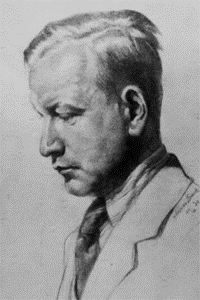
H. Berkelbach van der Sprenkel
1946-1955
-
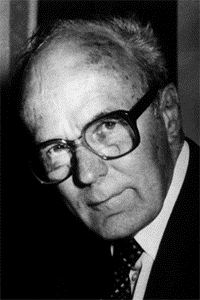
M.T. Jansen
1955-1981
-
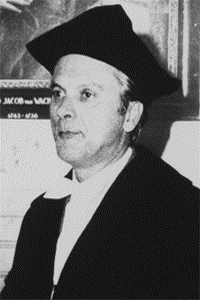
C. Poort
1972-1985
Upon his retirement in 1946, he was succeeded by Hendrik Berkelbach van der Sprenkel. The laboratory became independent from Physiological Chemistry in this year, and now focused on histology and microscopical anatomy [1]. Embryology became a part of Anatomy and our chair was changed into Histology and Microscopic Anatomy. However, not only the name changed. Berkelbach must have realized that the classical histology came to an end. Although he partly continued the work of Boeke, he reintroduced the dynamics of the experiment. He and his co-workers also tried to find new techniques in morphology: ultraviolet spectroscopy, photometry, radio-autography. Of these techniques the last turned out to be very useful and for a number of years. C.J.M. van den Broek was the authority in this field and in 1972 he was appointed lecturer of histology. Together with the attempts to find new ways in histology he re-established the combination morphology and biochemistry by attracting C. Poort, who in 1972 became lecturer and in 1980 professor of cytology.
In 1955 Berkelbach van der Sprenkel was succeeded by Marcel T. Jansen, who continued the edification of the new histology and who introduced the electron microscope in the medical faculty, with Izaak Molenaar until 1967 and later Johannes J. Geuze. They were among the first in the world to use an electron microscope in biology [3]. The power source of the microscope was shared with Demka, Utrecht’s factory of steel wire and steel casting. If Demka used too much power, images would become distorted, and the lab workers would only discover this afterwards. Often, experiments needed to redone multiple times [4]. Geuze, together with Jan Slot, introduced the technique of immunogold electron microscopy, for which the lab gained international recognition.
-
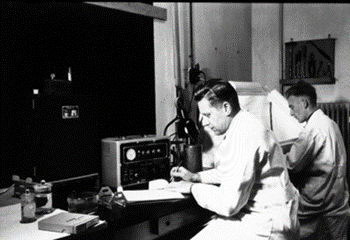
C.J.M. van den Broek
-
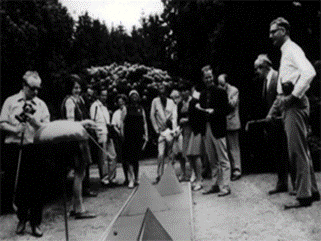
M.F. Kramer
1981
In 1969 the rebuilding of the department was reflected in a change of name: from there on it was called the department of Histology and Cell Biology. The research of the department became organised along two lines: "regulation of proliferation and differentiation in normal testis" and "synthesis and intracellular transport of (glyco)proteins" in which electron microscopy and biochemistry collaborated.
In 1980, Jansen retired, and was replaced by two professors, prof.dr. Johannes J. Geuze and prof.dr. Mebius F. Kramer. Kramer, originally a veterinary doctor, had joined the lab in 1961. He further expanded the dynamics of histology by introducing the study of stem cell kinetics in the lab. He became a full professor in December 1980, but left already in August 1981 for a senior management function in the government in The Hague. When asked why he left his professorship, he replied that his responsibilities had “exploded”. “I got more and more tasks and I drifted further and further away from scientific work” [5]. He continued to take on more management responsibilities, and in 1985 he became the dean of the Faculty of Medicine, in a time of large budget deficits [6].
Group picture in the 1970’s or 1980’s. Picture Cell Biology archive.
In 1981 prof.dr. Johannes A.W.M. van der Donk was appointed. Upon Kramer’s leave it was decided to split the chair into three different chairs along the line of the methods used: light microscopy, electron microscopy and biochemistry. All three chairs were going to be named Cell Biology and the department was renamed to the Department of Cell Biology. Van der Donk worked at the Faculty of Veterinary Medicine before. He was the founding father of a reform of education in medicine and medical biology. His goal was to make students able to critically read literature themselves, since teaching all necessary knowledge of medicine was no longer feasible [7]. He retired in 2007.
In 1974, Ger J.A.M. Strous had joined the department as a postdoctoral fellow. When Poort prematurely died in 1984, he was succeeded in 1991 by Strous, who remained a professor until his retirement in 2011. Strous worked on the cell biology of the growth hormone receptor.
In 2001, prof.dr. Judith Klumperman was appointed as a full professor. She is currently the head of the Cell Microscopy Core facility of the UMC Utrecht. Her research focuses on the endo-lysosomal system, the cellular digestive system. In 2016, she became the chair of the Netherlands Electron Microscopy Infrastructure of the National Roadmap for Large-Scale Research Facilities.
The final professor to be appointed in this department was prof.dr. Paul J. Coffer, in 2010. His research combines tumor biology, immunology, and regenerative medicine, and aims to selectively target cells in both cancer and (auto)immunity. In addition, since 2024 he is the Vice-Dean of Utrecht Life Sciences.
Professors
1918-1946 Jan Boeke
1946-1955 Hendrik Berkelbach van der Sprenkel
1955-1980 Marcel T. Jansen
1980-1981 Mebius F. Kramer
1980-2001 Johannes J. Geuze
1980-1984 Cornelis Poort
1981-2007 Johannes A.W.M. van der Donk
1991-2011 Ger J.A.M. Strous
2001- Judith Klumperman
2010- Paul J. Coffer
Locations in Utrecht
Dwelling house at Nieuwe Gracht (1919-1928)
Nicolaas Beetsstraat 22 (1928 - 1989)
AZU H, Heidelberglaan 100 (1989 -)
The birth of a new department of embryology and histology was accompanied by obtaining a laboratory of its own. This seemed to be difficult to find. In 1919 the department was given a large dwelling house at the Nieuwe Gracht for laboratory until a new laboratory would have been found.
The lab of Cell Biology (Nicolaas Beetsstraat 22) in 1974. License: CC BY 4.0. Picture Utrechts Archief, cat#53085. Before being a lab, the building was the house of the former director of the clinic for neurology. The building has been demolished; the space has been used to make the street on the left (Hartingstraat) wider.
The sign at the entrance of the above building has been preserved in the canteen of the current lab.
References
[1] M. W. Woerdeman, “Ontstaan en plaats der histologie in Nederland,” Ned. T. Geneesk., vol. 122, no. 50, pp. 1982–1984, 1978.
[2] G. C. Heringa, Prof. Dr. Jan Boeke en zijn betekenis voor de neurohistologie (23 oktober 1874 - 12 september 1956), vol. LIII, No.4. in Verhandelingen der Koninklijke Nederlandse Akademie van Wetenschappen, afd. natuurkunde, no. tweede reeks, vol. LIII, No.4. Amsterdam, The Netherlands: N.V. Noord-Hollandsche Uitgevers Maatschappij, 1961.
[3] NWO, “Wetenschap toen en nu: ‘Wat zij nu doet, had ik nooit gekund.’” Accessed: Feb. 12, 2025. [Online]. Available: https://www.nwo.nl/cases/wetenschap-toen-en-nu-wat-zij-nu-doet-had-ik-nooit-gekund
[4] M. A. C. Erkens, “Achtergebleven gebied vraagt dringend om ontwikkelingshulp,” U: Utrechtse universitaire reflexen: weekblad van de Rijksuniversiteit te Utrecht, vol. 3e jaargang, no. 35, p. 5, May 12, 1972.
[5] H. Ausems, “Utrechts hoogleraar Kramer top-ambtenaar in Den Haag,” Utrechts universiteitsblad, vol. 13e jaargang, no. 5, p. 7, Oct. 02, 1981.
[6] MSFU “Sams,” “Ereleden.” Accessed: Feb. 19, 2025. [Online]. Available: https://msfusams.nl/vereniging/ereleden
[7] E. Hardeman, “De grootste boosdoener is het modulaire systeem,” Utrechts universiteitsblad, vol. 24e jaargang, no. 19, p. 14, Jan. 14, 1993.

